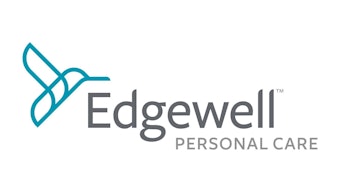
The beauty industry is primed to expand further into oral care as part of a wide-ranging wellness revamp of the industry, which has already transformed and even premiumized the antiperspirant/deodorant category, ingestibles and other sectors. Here, author Steve Pringle, Ph.D., offers a view of where the oral care sector is headed next.
—Editor
Guess what? The world around us has changed dramatically over the last 12 months—or has it? In a lot of personal care categories we have seen a shift in consumer priorities. For some categories, and in some regions, cost has become a higher priority with the consumer. However, in others there is greater focus on added functionality, driven by a greater need for personal at-home care.
Then we look at the world of oral care, where product functionality has been at the core of the value proposition to consumers for some time. From a distance it looks like not much has changed in the category, but closer examination reveals a different story.
Oral Care’s Inherent Value
Oral care is a strange beast. We generally recognize the importance of a regular oral care routine in our lives—no one wants to go to the dentist for a checkup and see that look on the dentist’s face which means: “Hmm, I’m going to need to do a lot of work here.”
There’s a strong recognition that we as consumers need to brush regularly to help prevent cavities, but also that poor oral health can be a doorway to other health issues. This strong link has been driven significant developments in the functional capabilities of the category over the last few decades.
In addition to well-established functional ingredients such as surfactants, fluoride, etc., over the last decade we’ve seen ingredients that address sensitivity and bacteria management become established as norms with the consumer.
This makes oral care unique in the personal care world in that it delivers a multitude of positive health benefits, and these health benefits are the primary connection to the consumer.
Ripe for Disruption
In many beauty and personal care categories, including deodorant, we’ve seen an increase in ways to create consumer connection, but in many ways oral care lags behind in this. Stand in the oral care aisle in your local supermarket and you’ll see a huge variety of offerings for the consumer, but the majority of these options vary simply in the functionality combinations being offered, such as anticavity, sensitive, antibacterial and all the various combinations.
Toothpaste and mouthwash dominate the oral care category in value, with a relatively small number of multinational brands having the largest market share (F-1-3). Despite this potential dominance of the big brands, there still appears to be plenty of space for smaller local brands from the bigger manufacturers such as Sorriso, Blend-a-Med and Macleans, as well as brands from local and regional manufacturers such as Glister (Amway), Cnice (Nice Group), Nonio (Lion), Hapee (Lamoiyan), Twin Lotus (Twin Lotus Corp.), Formula (Orang Tua Group) and Elgydium (Pierre Fabre). Smaller brands are able to position themselves in a way that allows for differentiation from the competition and connection to the consumer.
Top Claims
Much of a product’s ability to differentiate and find a position has traditionally been based around the functional claims made by the product. Looking at F-4, we can see the prevalence of the types of claims made. Fortification with vitamins or minerals, primarily fluoride, continues to be the top claim made. This is based on a wealth of scientific evidence linking the benefits of fluoride to the reduction of dental caries and has strong recognition with the consumer.
Clinical claims were initially based on stannous fluoride (SnF2), which was the active fluoride ingredient in the original Crest toothpaste. Other fluoride actives became generally available in the 1960s, such as sodium monofluorophosphate (SMFP), which delivers its activity by hydrolyzing in saliva to release free fluoride ions. Since the development of fluoride-compatible silica systems in the early 1980s, most formulations deliver fluoride from one of four clinically proven fluoride salts: sodium fluoride, stannous fluoride, SMPF and amine fluoride.
Other functional claims are also prevalent, such as breath freshening (that clean, fresh feeling being strongly linked to cleaning efficacy), sensitivity and anti-bacterial. Sensitivity is an interesting area, which has become one of the established needs to an increasing number of consumers.
Dentine hypersensitivity is the sensation felt when the nerves inside teeth become exposed and can range from irritation to intense pain. There have been different approaches to creating solutions for dentine hypersensitivity, from the use of potassium salts such as potassium nitrate (which reduces the transmission of pain by directly blocking nerve impulses) to precipitation technologies using active ingredients such as arginine and calcium carbonate, strontium acetate, strontium chloride, and hydroxyapetate (HAP)1 Precipitation technologies aim to block the exposed dentinal tubules with mineral precipitates that pack into these openings.
Oral Care’s Limited Flavor Palette
One of the difficulties in product differentiation in oral care comes from the delivery of flavor. In most other personal care categories consumers can and want to experience a wide range of flavors or fragrances. However, when we look at flavor and fragrance being delivered by oral care products, we see that mint continues to be king.
According to data from Mintel GNPD (F-5), in the five years ending October 1, 2020, there were more than 15,000 new toothpaste products launched globally, with more than 87% having mint as their core flavor profile. It would seem from the number of launches that the space encourages innovation, but perhaps just not when we’re considering flavor?
There are some subtle regional differences. In Europe and the Americas, mint definitely rules—there is little deviation in most adult toothpastes or mouthwash. Children get to have all of the fun, with fruit and fantasy flavors, but then as they grow older even they switch to mint or mint derivatives as the core flavor being delivered.
In addition, if we look at some of the fringe flavors on offer, again Europe and The Americas tend to be quite conservative, with the variants being based around mainstream flavors from other, similar categories. Asia offers a little more diversity in its acceptance of fringe flavors with floral other regional variants being developed.
To understand the narrow flavor range we have to understand the reasons why consumers have traditionally chosen oral care products, and what their expectations are of the experience of using an oral care product. Takasago has conducted extensive consumer research in this area, which has allowed for a deeper understanding of the consumer mindset. An example of this can be seen in F-6, where it is clear that the feeling of clean, fresh and a refreshing feeling are the drivers of the oral hygiene experience. This is strongly connected to a mint flavor.
One of the major challenges being faced in delivering the feeling of clean and fresh, however, is the variety of active ingredients in an oral care product base, which rarely taste nice and can lead to an oral care product being unpalatable enough to put off the consumer from returning to it. If you’ve tasted any mouthwash product that uses chlorohexidine as the antibacterial active you’ll know what I mean! While this ingredient is extremely good at killing a broad range of bacteria to a very high level, it doesn’t exactly taste pleasant.
The question is: is there is a challenge in delivering functional efficacy, developing a product that is attractive to the consumer and which allows for personalization? Should we be trying to develop ingredients that give a desired effect and can create the emotional connection and enjoyment consumers want to see? Could flavor deliver more than just taste?
We also need to understand exactly what is meant when we talk about taste and flavor. In simple terms, our experience when we taste something is a combination of interactions primarily through three pathways (F-7):
- The odor experience through the olfactive function makes up the majority the experience.
- There are also significant contributions to the experience from the gustatory function so that we can “taste” sweet, salty, sour, bitter and umami characteristics.
- The interaction with the trigeminal function, meanwhile, allows us to interpret heating, cooling, tingling, astringency, etc.
Add to this factors such as texture and you have what we refer to simply as “taste” or “flavor.”
This multidimensional interaction contributes to those feelings of clean, fresh and refreshing that consumers connect to a positive oral care experience. It’s here in these extra dimensions where flavor development can play an extremely important part.
Whitening: a Bridge to Beauty
Whitening appears to offer no observable health benefit, but it seems that the consumer associates white teeth with having healthy teeth. The action of whitening through, for example, a toothpaste product is typically achieved through a mild abrasive. Rather than whiten, the abrasive scours the surface stains to remove them.
Abrasives such as zeolites and silicates have been used in toothpaste formulations to achieve this. Another method is to add ingredients such as hydrogen peroxide into an oral care formulation. This has some regulatory challenges and is not always permitted in all regions.
Clearly, this is more of a beauty than a functional claim. Yet, this desire to both feel clean, but also have visibly cleaner, brighter teeth is becoming more important. This is reinforced when we look at recent launches with whitening claims by country (F-8). Interestingly, the growth of whitening claims links heavily into anti-aging trends in other personal care categories.
Over the last few years we have seen brands explore how they can deliver whitening benefits without adding ingredients that could be perceived as “harsh” by the consumer. Ingredients such as charcoal and other botanicals are therefore being added for their perceived whitening benefits.
This includes products such as Perlweiss White by Night (with liquid calcium technology) or Colgate Max White Expert complete (with advanced whitening technology), which create the perception of a high tech approach to beauty, while My White Secret Charcoal whitening strips takes a beauty-oriented packaging approach to position itself in an advantageous waa.
Another interesting aspect of whitening as a functionality is that whitening products themselves have shown some decline rather than growth. This could be because:
1. whitening can be achieved through brushing, rendering the need for an additional product surplus to requirements;
2. generally, whitening products can be challenging to use and unpleasant to taste;
3. or the efficacy of dedicated whitening products has not provided the desired results.
Perhaps there an opportunity for further innovation in the space?
Beautifying Oral Care
There seems to be a significant shift in the oral care world, driven by two “b” buzzwords: biofilms (the bacterial communities in the mouth) and beauty. Taking cues from other personal care categories, beauty has seemingly been a source of inspiration for brands to develop more stylish packaging and formulas or concepts that bring oral health from consumers’ functional mindset into their beauty regimes. It has also opened the door for beauty brands to elevate the category as it did in the deodorant/antiperspirant category.
Recent new product development has made oral care “makeup for the breath,” using beauty-inspired ingredients such as cica and hyaluronic acid, as well as beauty-inspired themes such as “empowerment.” Other strategies include aligning product positioning to consumers’ personal values.
For the full article, check out Global Cosmetic Industry's January 2021 digital magazine.

!['Snoopy and Woodstock are cherished [characters] across generations and pairing them with our most-loved body care essentials creates a collection that feels classic with a modern twist. This launch is about celebrating our community with something unforgettable while starting an exciting new era for the brand,' said Luis Garcia, Chief Marketing Officer.](https://img.gcimagazine.com/mindful/allured/workspaces/default/uploads/2025/10/tree-hut-peanuts-fullcollection-fall26-1x1-1253.lGcuurUszp.jpg?auto=format%2Ccompress&fit=crop&h=191&q=70&w=340)








